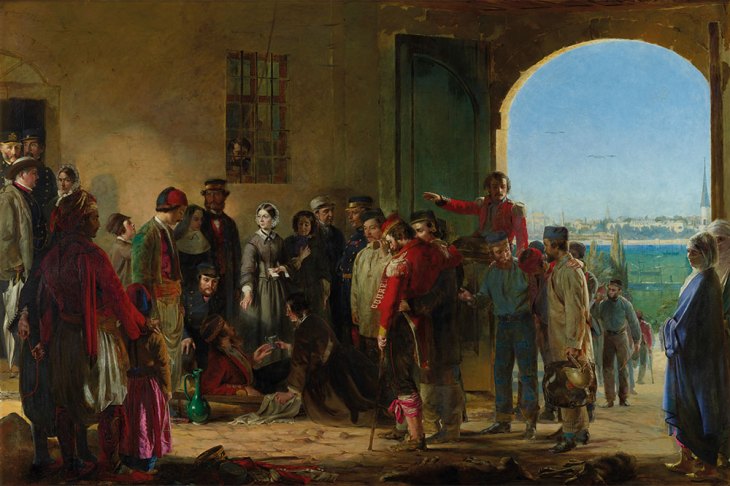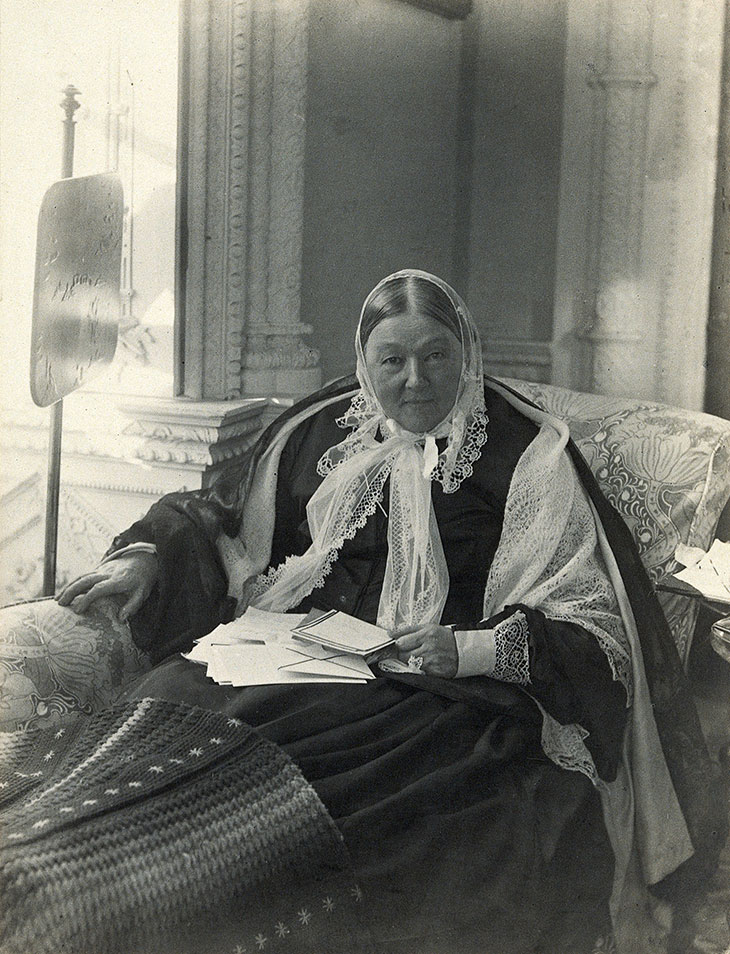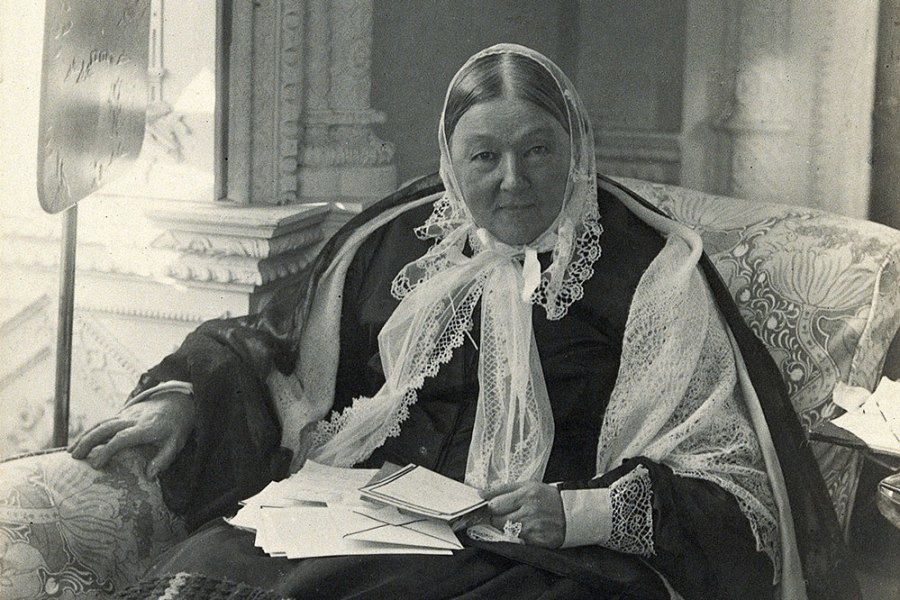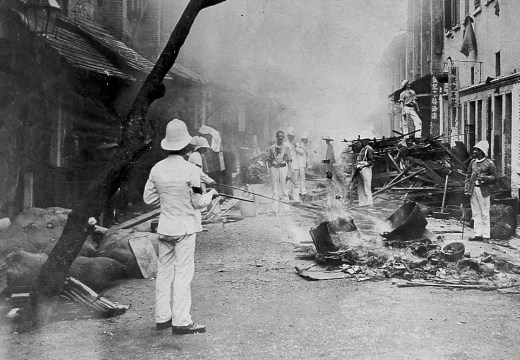Over the past few years several Victorians of distinction, including Dickens, Darwin, Ruskin, Charlotte and Emily Brontë and, indeed, the queen herself, have each celebrated their bicentenary with a dutiful round of exhibitions, broadcasts and books. The latest birthday girl, however, will require no such effortful acts of remembrance. For by some freakish accident, Florence Nightingale’s anniversary has arrived slap bang in the middle of a crisis which has invoked her name. In east London, and other sites around the country, huge temporary hospitals have been thrown up overnight to cope with the Covid-19 outbreak. They are to be called ‘Nightingale’ hospitals.
This act of naming is particularly apt, since Nightingale came to fame working in a hastily converted hospital in similarly catastrophic conditions. In 1854 she shipped out for the Crimean War with a band of middle-class women whom she had recruited to nurse the British casualties. What she found at Scutari appalled her: not so much the soldiers’ battle wounds as the filthy conditions in which they were being treated. Thousands of men were dying from secondary infections.

Florence Nightingale photographed by Henry Hering in 1856–57; half-plate glass copy negative
by Elliot & Fry in the 1950s. National Portrait Gallery, London
Nightingale’s response was to institute a rigorous protocol of basic hygiene. When she came to write up her Notes on Nursing a few years later, in 1859, she left her readers in no doubt that ‘Every nurse ought to be careful to wash her hands very frequently during the day’. It was this bracing, antiseptic spirit that Nightingale imported into her long and hugely influential post-Crimean career as a sanitary reformer. While sticking to her own Mayfair sickroom – she may have been suffering from PTSD, depression, brucellosis, hypochondria, or a mixture of all four – she managed to reform the working conditions of the British army in India and to advocate for every domestic dwelling in Great Britain to be connected to mains drainage.
Early on in her Crimean career, The Times dubbed Nightingale ‘The Lady with the Lamp’, a phrase that was taken up by Henry Wadsworth Longfellow in his adulatory poem of 1857. Such a compelling image quickly migrated into popular art, and endless lithographs of varying quality circulated showing Nightingale hard at work in the wards, haloed by her own light source. These scenes had to be constructed from imagination since the lady herself was adamant that she would not pose, declaring it to be a complete waste of her time. The artist Jerry Barrett famously went out to Scutari in the closing days of the war to beg Nightingale to sit for his monumental narrative painting The Mission of Mercy: Florence Nightingale Receiving the Wounded at Scutari (1857); she turned him down four times, becoming more bad-tempered on each occasion. Given such a hostile reaction, most artists didn’t even bother approaching Nightingale and instead worked from the news bulletins that appeared regularly in The Times. A typical result was Joseph Austin Benwell’s workaday Sketch of a Ward at the Hospital at Scutari (c. 1856), showing Nightingale with her famous lamp (the wrong sort apparently – she actually used a highly distinctive Turkish ‘fanoos’). Far stranger was Henrietta Rae’s Miss Nightingale at Scutari, 1854, painted at the end of the century, in which the Lady with the Lamp – part Madonna, part good-time girl – looms seductively over a particularly soulful soldier.

The Mission of Mercy: Florence Nightingale receiving the Wounded at Scutari (1857), Jerry Barrett. National Portrait Gallery, London
This wide range of responses found its counterpart in the biographical literature. At first Nightingale was written up as a model for young Victorian girls: a Protestant saint devoted to the wellbeing of others. Thousands of babies were christened ‘Florence’, and a statue of Nightingale was installed at Waterloo Place in the heart of clubland. By the time the First World War was over, however, readers were less ready to romanticise. Lytton Strachey’s Eminent Victorians (1918) famously demolished the Lady with the Lamp, substituting instead a demonical woman who quite literally worked her friends and associates to death with her endless demands. Strachey’s influential theory that ‘Flo’ was a celibate spinster who had sublimated her erotic desire into a will for mastery has never quite gone away. Edward Bond’s play Early Morning (1968) has Nightingale – ‘very fond of privates’ – conducting a lesbian affair with Queen Victoria. It was the last time that the lord chamberlain felt it necessary to ban a play in its entirety.
Yet despite this robust and sustained debunking, Nightingale has also been remarkable in retaining her establishment allure. Playing her on stage and screen has proved a rite of passage for great 20th-century British actresses, including Edith Evans and Anna Neagle. Prior to 2002, Nightingale was the only woman, apart from royalty, whose image had adorned British paper currency. And now, when our hard-pressed government needs to muster a single word to summon up the idea of British heroism against the odds, it has had no hesitation in choosing ‘Nightingale’.

Florence Nightingale photographed by Millbourn in c. 1890. Wellcome Collection, London (CC BY 4.0)
Kathryn Hughes is Professor of Life Writing at the University of East Anglia and a literary critic for the Guardian. Her most recent book is Victorians Undone: Tales of the Flesh in the Age of Decorum (4th Estate).
From the May 2020 issue of Apollo. Preview and subscribe here.
Unlimited access from just $16 every 3 months
Subscribe to get unlimited and exclusive access to the top art stories, interviews and exhibition reviews.














![Masterpiece [Re]discovery 2022. Photo: Ben Fisher Photography, courtesy of Masterpiece London](http://www.apollo-magazine.com/wp-content/uploads/2022/07/MPL2022_4263.jpg)
Has the Fitzwilliam lost the hang of things?